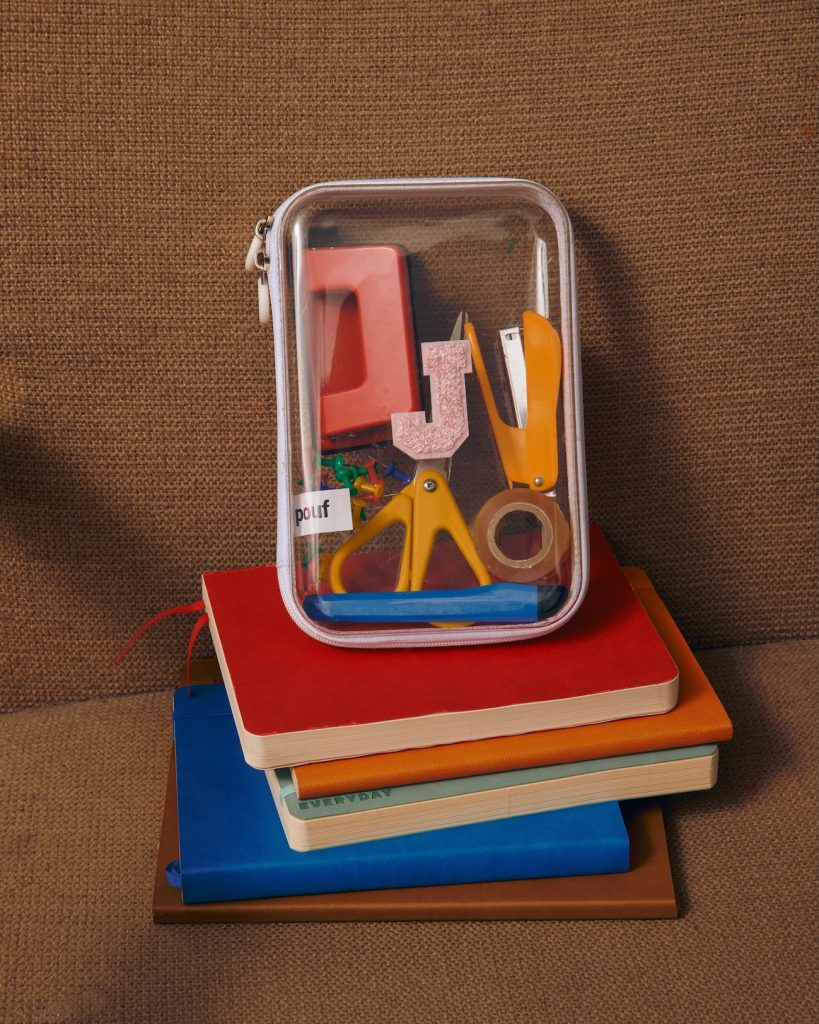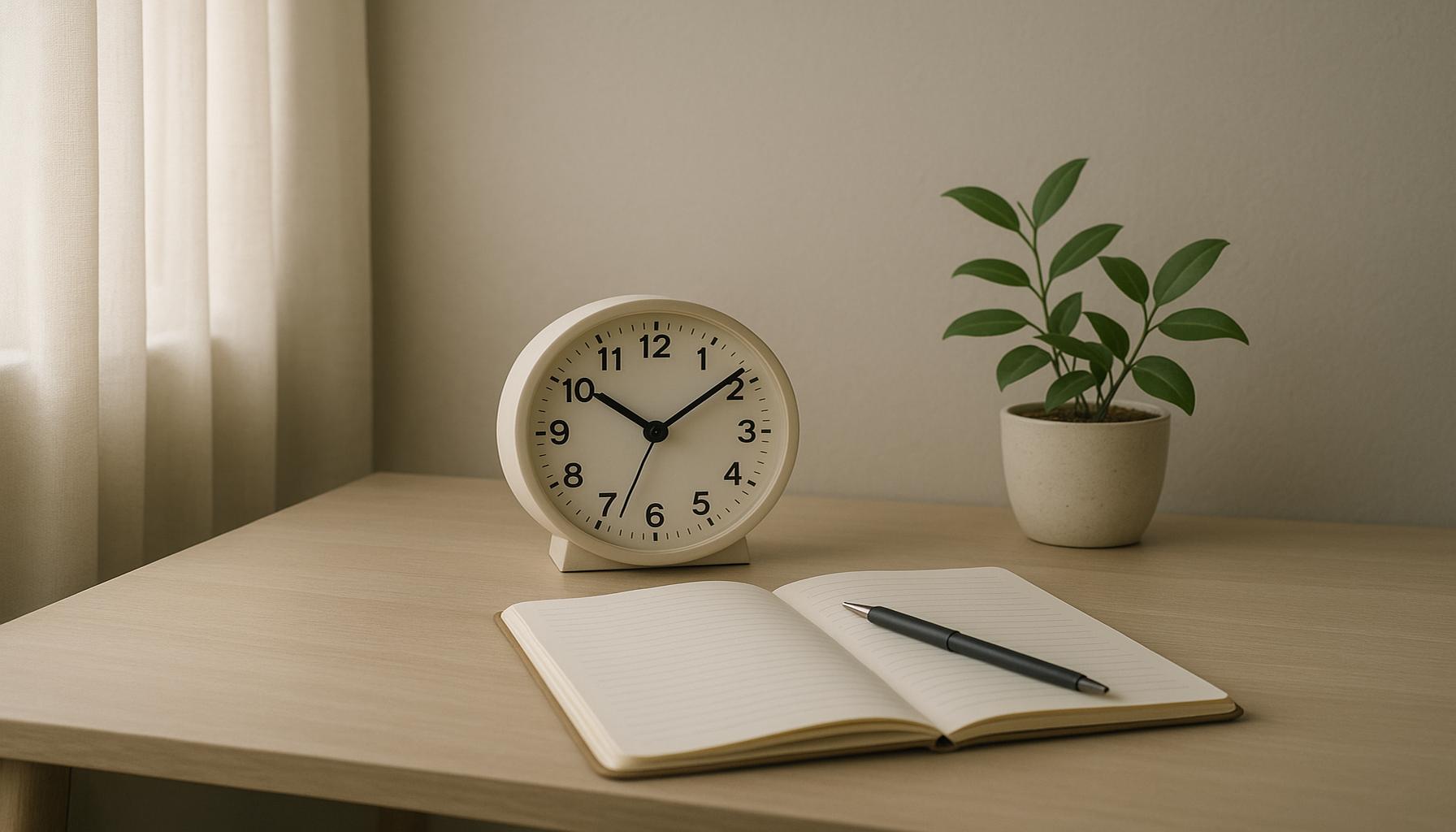The Intentionality in the Practice of Minimalism: How to Set Clear Goals for Personal Organization

Embracing the Art of Minimalism
In a world overflowing with distractions and consumerism, the practice of minimalism has emerged as a refreshing antidote. By focusing on intentionality, individuals can declutter their lives—both physically and mentally—while discovering the profound impact of simplicity. This article delves into how setting clear goals can transform your approach to personal organization.
The Power of Intentional Living
Intentionality is about making conscious choices that align with your core values and aspirations. Minimalism invites us to:
- Identify what truly matters in our lives, which could range from family and career to personal passions.
- Eliminate the unnecessary, not just in terms of material possessions but also through time-wasting distractions.
- Design a life that reflects our priorities, allowing us to invest time and energy in what we value most.
By establishing specific goals, anyone can enhance their focus and productivity. For instance, consider the impact of:
- Creating a dedicated workspace free of distractions, perhaps by decluttering your desk or using noise-canceling headphones to improve concentration.
- Establishing a daily routine that prioritizes essential tasks, such as setting aside time each morning for deep work before the day’s distractions take over.
- Implementing a method for evaluating possessions based on use and value, like the well-known Marie Kondo method, which encourages keeping only items that “spark joy.” This not only helps in decluttering but allows a deeper appreciation for what you choose to keep.
As you navigate the journey of minimalism, understanding the role of intentionality is crucial. It empowers you to streamline your environment and enhances your overall well-being. For instance, think about the mental clarity that comes from having a tidy space, free of visual distractions. Consider how implementing intentional experiences, such as spending a weekend in nature, can help reprioritize what truly matters in life.
Dive deeper into the strategies that can help you set achievable goals for a more organized life. Engage in practices like journaling to track your progress, using apps to help schedule tasks, or joining community workshops that teach minimalism principles. In a culture driven by consumerism, embracing minimalism is not merely an act of decluttering; it is a path to discovering a more meaningful existence.

DISCOVER MORE: Click here to enhance your routine
Setting the Stage: The Importance of Goal-Setting in Minimalism
To effectively embrace minimalism, the act of goal-setting becomes a powerful tool that propels personal organization and clarity. By defining specific objectives, you can begin to align your daily actions with your deepest values. Goals are not merely wishlists; they establish a roadmap for achieving a simplified and fulfilling life.
When you set clear goals, you create a framework that encourages deliberate decision-making. This results in a productive environment that fosters creativity and decreases stress. Here are some key areas to focus on when defining your goals:
- Financial Goals: Consider how much you want to spend monthly on non-essential items. This can help curtail impulsive purchases, allowing you to save for experiences that truly resonate with you, such as travel or education.
- Time Management: Aim to schedule specific blocks of time for productive work or family engagement. By recognizing where your time goes, you can eliminate activities that don’t serve your long-term aspirations.
- Space Optimization: Set a goal to minimize clutter in certain areas of your home, like your living room or bedroom, allowing you to enjoy a serene environment that promotes well-being.
- Emotional Clarity: Invest time in reflecting on your emotional state each week and how it aligns with your values and goals. This practice deepens your connection to minimalism by acknowledging its impact on your mental health.
The journey toward minimalism is a highly personal one, requiring an examination of what resonates with you. By following the goal-setting approach, you will be better equipped to navigate this transformative path. For example, if you aim to simplify your wardrobe, you can clearly define your target: reducing your clothing to a capsule collection that consists of versatile, high-quality pieces. This tangible goal not only declutters your space but also streamlines decision-making in your daily life.
Setting measurable and attainable goals can foster a sense of accomplishment and motivation. For instance, instead of stating, “I want to be organized,” refine this goal to, “I will declutter my garage by the end of the month, giving away items I no longer use.” This level of specificity guides your actions and minimizes the overwhelm that often accompanies change.
Throughout this process, remember to celebrate small victories. Each step taken towards intentional living deserves recognition, whether it’s clearing out a single drawer or designating a few hours each week for focused reflection. These milestones are indicative of progress and reinforce your commitment to a minimalist lifestyle. With proper goal-setting, personal organization becomes not just an aspiration but a tangible reality.
The Intentionality in Minimalism
Minimalism is more than just a design style; it is a profound lifestyle choice that invites an intentional approach to how we manage our lives. By focusing on what truly matters, individuals can create a clearer path toward their goals. This shift toward intentionality plays a vital role in personal organization, as it encourages the elimination of distractions and excess that can cloud judgment and hinder productivity.To embrace the concept of intentionality in minimalism, it’s essential to establish clear priorities. Begin by identifying the core values that resonate most strongly with you. These values serve as your guiding light, making it easier to categorize tasks and responsibilities in alignment with your long-term aspirations. For example, if health is a priority, you may choose to allocate time for meal preparation and exercise. This conscious decision-making not only enhances overall well-being but also cultivates a strong sense of purpose.
Setting Clear Goals
Setting clear and achievable goals is a cornerstone of effective personal organization. Rather than succumbing to overwhelming lists of tasks, minimalism advocates for the simplification of objectives. To do this, consider employing the SMART criteria—Specific, Measurable, Achievable, Relevant, and Time-bound. Crafting goals within these parameters ensures that each target is realistic and attainable, increasing the chances of success.Moreover, integrate a review mechanism within your goal-setting strategies. Regularly assessing your progress helps identify which goals require adjustment or re-evaluation. This practice of reflection reinforces accountability and fosters an adaptable mindset, essential components of a minimalist lifestyle. By continuously honing your approach, you can maintain focus on your core aspirations, reducing the potential for burnout or disinterest.In embarking on this minimalist journey, remember that each step taken toward intentional living brings you closer to a more organized, fulfilling existence. The pursuit of personal goals becomes clearer, liberating you from the clutter that often hampers true success. Embrace the art of minimalism today, and effortlessly channel your efforts into what matters most.
DISCOVER MORE: Click here to find out how decluttering can transform your mindset
Creating a Structured Plan: The Steps to Achieving Your Minimalist Goals
Once you have identified the key areas to focus on and established clear goals, it’s essential to craft a structured plan that will guide you on your path to minimalism. This planning phase serves as the skeleton of your journey, providing both direction and a means to track your progress. Here are the steps to consider when building your minimalist action plan:
- Prioritize Your Goals: Begin by ranking your goals based on urgency and importance. Ask yourself which aspects of your life cause the most clutter, be it physical, emotional, or digital. For instance, if a cluttered workspace hinders productivity, tackling that space first could yield immediate benefits.
- Break Goals into Actionable Steps: Transform your overarching goals into smaller, actionable tasks. Rather than attempting to declutter an entire garage in one day, break it down into manageable segments—perhaps tackling a single shelf or a box daily. This bite-sized approach reduces procrastination and makes the process feel less daunting.
- Set Deadlines: Assign realistic deadlines to each task. Just as you would for any project at work, setting timeframes creates a sense of accountability. For example, you might decide to complete your wardrobe overhaul within two weeks, influencing how you plan each decluttering session.
- Reflect and Adjust: Regular reflection is vital. At the end of each week or month, take time to assess what worked and what didn’t. Did you stick to your planned schedule? What obstacles arose? Use these insights to adjust your plan moving forward, ensuring it remains aligned with your evolving needs.
Incorporating technology can enhance this planning process. Utilize apps designed for organization, such as Trello or Todoist, to track your goals visually. These tools allow you to create lists, set reminders, and monitor your progress, providing a clear overview of your mini-achievements and deadlines.
Emphasizing Intentionality in Minimalism
The essence of minimalism lies not solely in the act of decluttering but in the intentionality behind each decision. This facet reinforces the importance of evaluating your relationship with your belongings, commitments, and even digital spaces. Consider implementing a “one-in, one-out” policy where for every new item you bring into your life, whether it’s clothing or a gadget, an existing item must be removed. This tactic not only curtails unnecessary accumulation but also reinforces mindful consumption.
Another critical aspect of intentionality is recognizing the emotional weight items carry. Each possession should serve a purpose, whether it brings joy, utility, or value to your experiences. In moments of doubt regarding what to keep, ask yourself: “Does this item enhance my life or contribute to my goals?” This reflective questioning not only applies to physical items but also extends to social obligations and digital content that clutter your mental space.
Beyond possessions, cultivating an intentional mindset means being selective with your time and commitments. Evaluate which activities fuel your passion and align with your minimalist aspirations versus those that drain your energy. By setting clear boundaries, you create an environment conducive to focus and peace.
Finally, involve others in your minimalist journey. Share your goals with friends or family, who can serve as accountability partners. This communal approach adds a layer of motivation and encourages open discussions about the benefits and intricacies of minimalism, enriching your understanding and commitment to this lifestyle.
DISCOVER MORE: Click here to learn how simplicity can enhance your life
Conclusion: Embracing Intentionality in Your Minimalist Journey
In a world overwhelmed by excess, the journey toward minimalism offers a refreshing perspective on how to reclaim our lives through intentionality and focus. By setting clear goals and creating a structured plan, individuals can navigate the clutter of modern living with greater ease and purpose. Understanding your priorities, breaking them down into manageable tasks, setting realistic deadlines, and regularly reflecting on your progress are essential steps to achieving a more organized and fulfilling existence.
However, the practice of minimalism transcends mere decluttering; it embodies a profound shift in mindset. Each item we own, each commitment we take on, must be evaluated through the lens of intentionality. Do they enhance our lives, align with our goals, or contribute to our well-being? Engaging in this reflective process cultivates a deeper connection with ourselves and fosters a lifestyle that prioritizes quality over quantity.
Furthermore, embracing minimalism as a communal journey invites support from those around us, fostering an accountability network that enhances motivation and enriches the experience. As we share our challenges and successes, we not only strengthen our resolve but also inspire others to contemplate their relationship with materialism and organization.
Ultimately, the path to minimalism is unique for everyone, but it begins with a conscious choice to live deliberately. As you embark on this transformative journey, remember that the accumulation of less can lead to the abundance of more—more clarity, more peace, and more freedom to pursue the things that truly matter.


